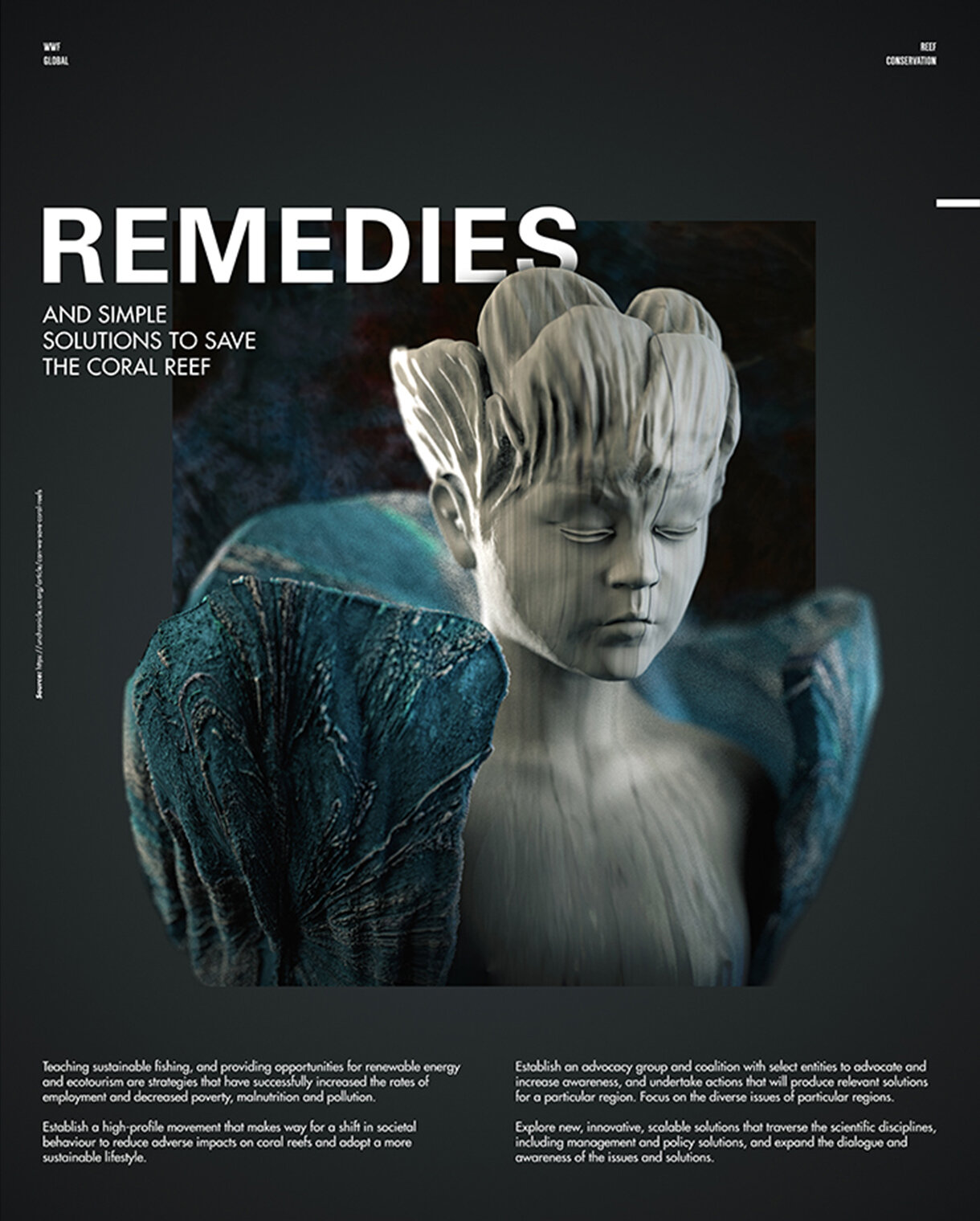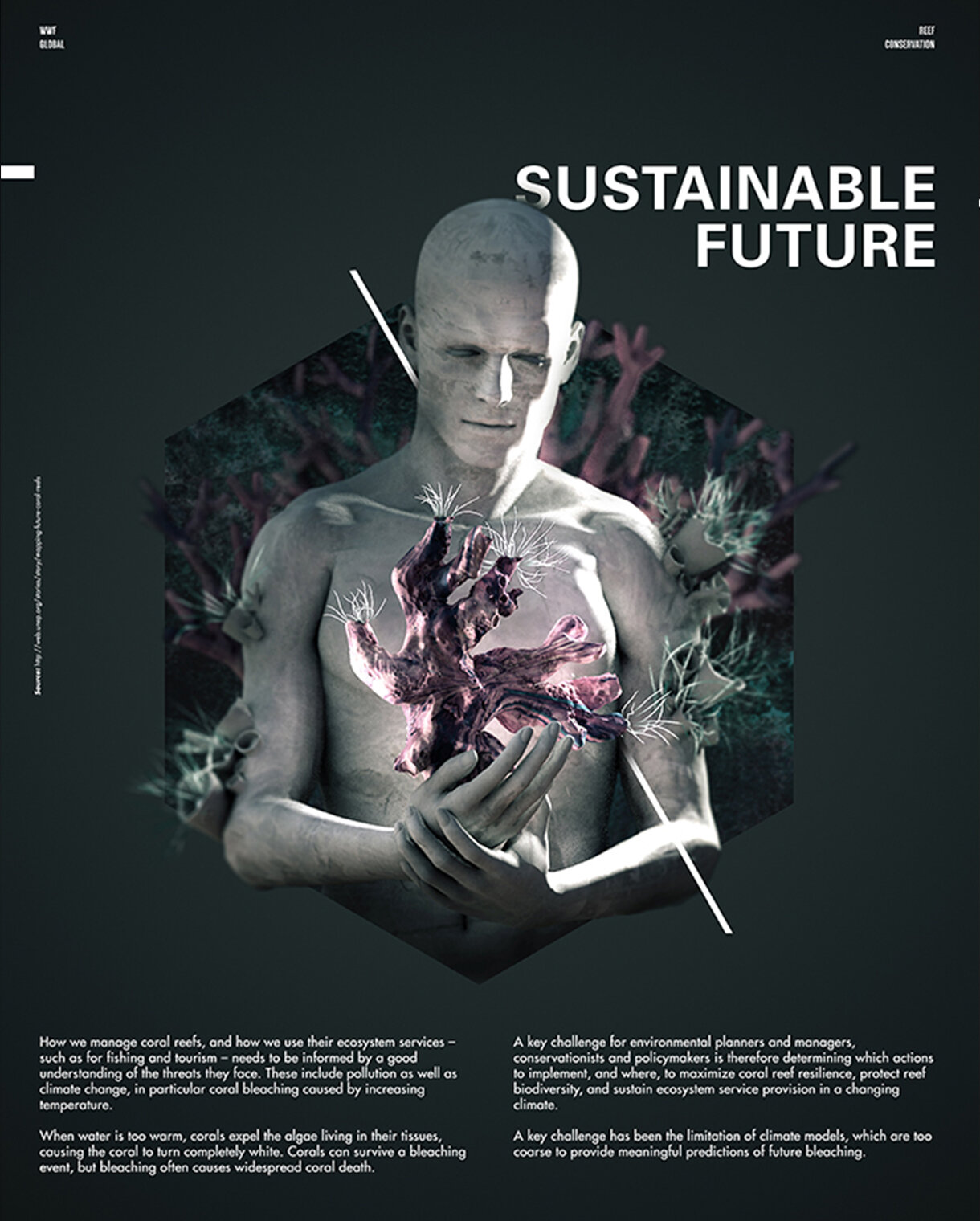“The sea, once it casts its spell, holds one in its net of wonder forever.”
— Jacques Cousteau
Project overview
Sensitising a young audience aged between 18-25 years on a major marine issue that is threatening the biodiversity of our ocean- the destruction of coral reefs.
An exhibition to communicate to the audience through visual storytelling. Exhibitions can use various types of artworks ranging from canvas printing to new technologies such as 3D printing and interactive motion artworks. This creative solution targets millennials who emphasise visual stories and experiences.
The strategy
This self-initiated has been designed to tackle a real issue faced by the Mauritian society. The alarming rate of our coral reef disappearing is a major concern that will negatively affect Mauritian lifestyle if left unattended. This provided a foundation for the project development’s theme- Hybridity.
The term hybridity in this context refers to the mix between various elements-namely, corals and humans. During this experimentation process, a variety of techniques were explored. From the chaotic environments of fractals to the 3D sculpting of corals which allows for more precision and control over form, these methods produced different visual outcomes.
The process
The design phase covered a lot of different visual styles following the research on the target audience. After months of research and development, a visual style was established for the exhibition that would demonstrate the theme of Hybridity. Inits literal from, hybridity is the mix of different species and in the art and design scene, it is the process of mixing various techniques to achieve a final result.
The challenge was to mix human form with marine life to create wholeness and harmony between the two different species. These initial images acted as a guideline for the creation of 3D assets.
Obtaining high quality images of corals and underwater environments for photomanipulation was quite irrelevant for this project as the task proved to be too costly. With existing library of stock images of dead corals and other textures, these style frames were created to provide a foundation. An initial use of fractals were created to simulate the textures and shapes of corals.
However, this was quite problematic since fractals area highly trial and error type of approach, especially for the appearance wanted in this particular case.To solve this issue, 3D sculptures were opted for the project. With software such as Zbrush and Cinema4d, the whole series of visual was re-created in a 3D environment. Given the complexity of the coral formations, 3D texturing helped in achieving a closer interpretation of the shapes. Unlike the use of fractals,more control was definitely a plus in this situation,giving a polished finish.
The outcome











